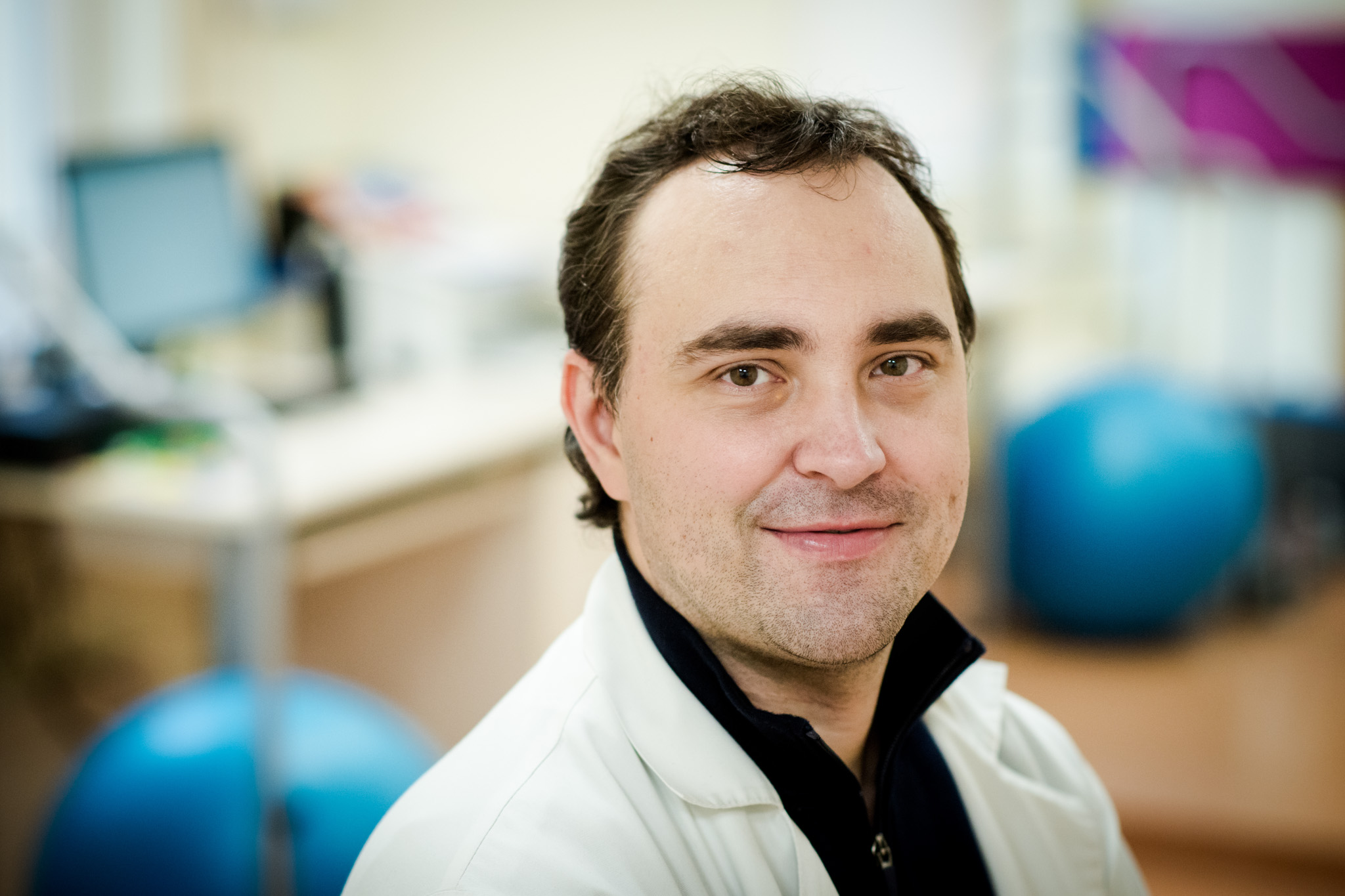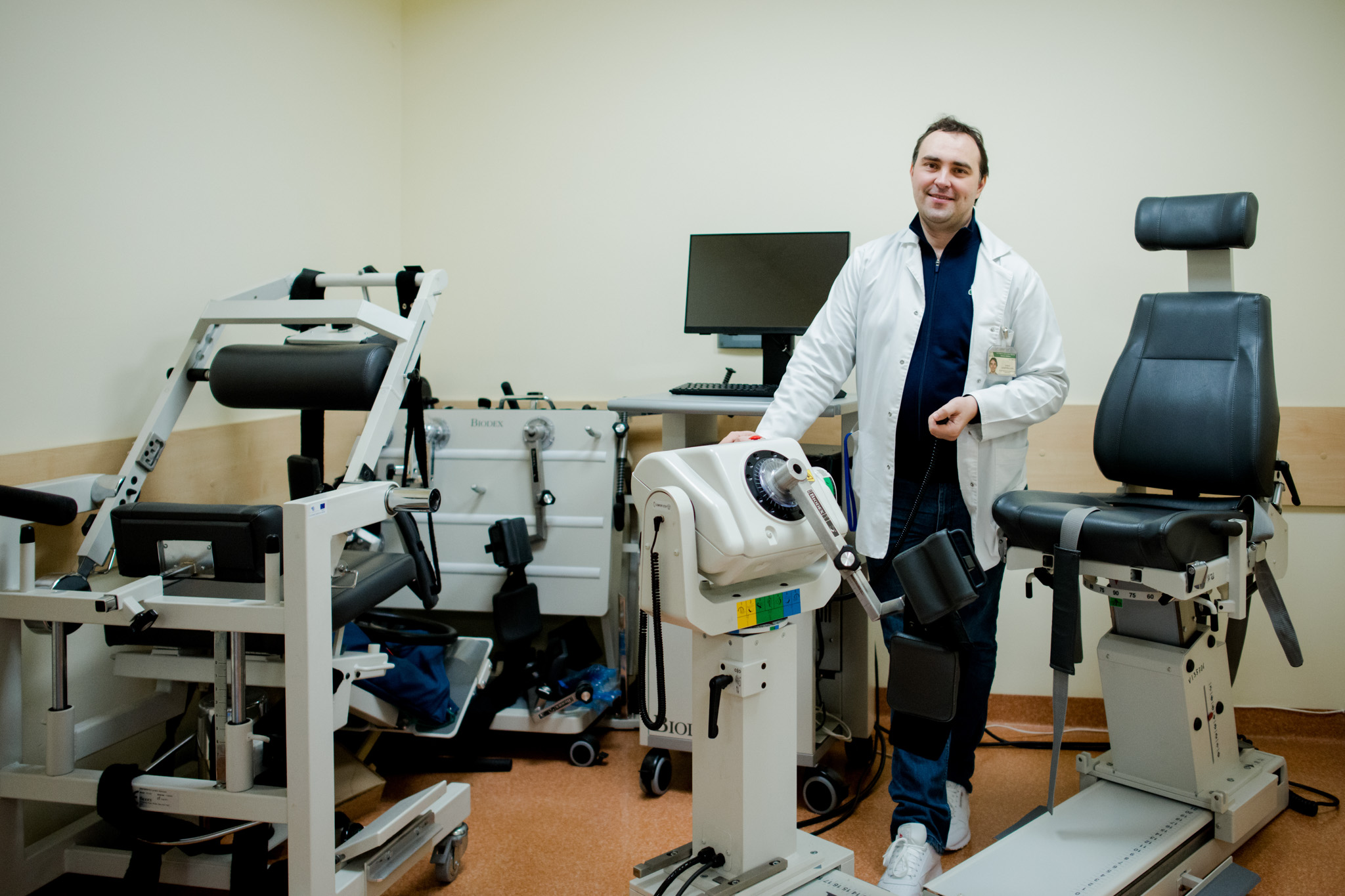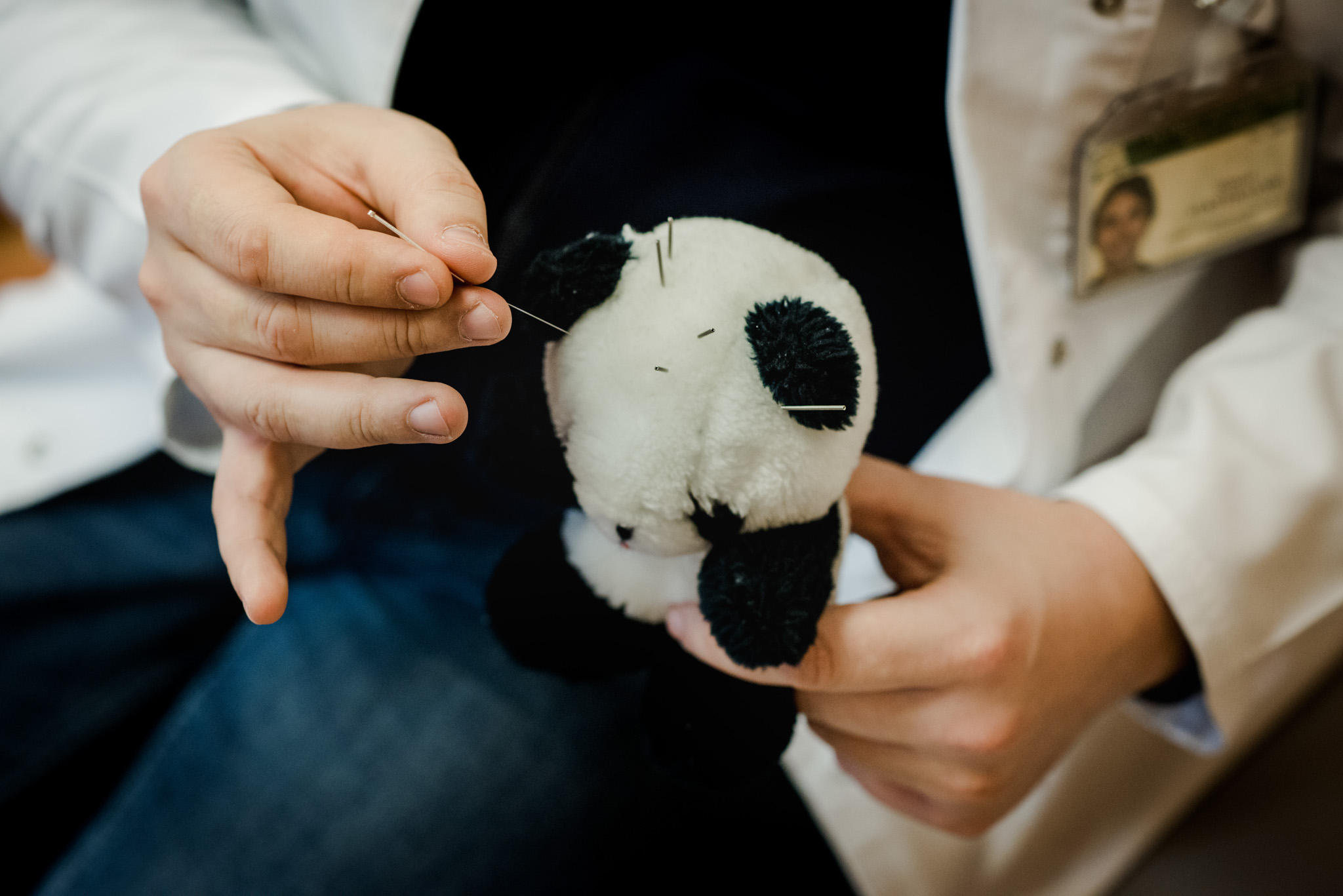 Physical medicine and rehabilitation doctor Tomas Aukštikalnis. Photo: VU MF
Physical medicine and rehabilitation doctor Tomas Aukštikalnis. Photo: VU MF
“When my supervisor and I first considered whether we should opt for this topic, the available information was so scarce, we wondered whether the topic is so simple that everyone already knew everything about it or was the topic so complicated that no one has been willing to explore it,” explained physical medicine and rehabilitation doctor, Tomas Aukštikalnis.
On 29 December 2022, you defended your doctoral thesis “The effect of comprehensive medical rehabilitation in the treatment of non-specific lower back pain in adolescents”. Tell us about your research.
Over the past couple of decades, people have become more sedentary, i.e, not sufficiently physically active, which results in some undesirable consequences. One of them is back pain. During my medical residency, I had come across adult patients suffering from back pain, and was looking for ways to help them. I also prepared my final residency thesis on this topic.
Later, I started working at the Children’s Hospital of Vilnius University Hospital Santaros Klinikos where I came across many children with back pain. I became interested in this area from a medical point of view. When we first considered whether we should opt for this topic, the available information was so scarce, we wondered whether the topic is so simple that everyone already knew everything about it or was the topic so complicated that no one has been willing to explore it.
This made me delve deeper into the subject. It turned out that the causes of back pain in children and adults are completely different. So we started looking for opportunities to help children.
We noticed that children aged 14-16 years were most susceptible to back pain. Interestingly, if one experiences severe back pain in childhood, the problem tends to recur in adulthood, and is one of the most significant risk factors. The pain is more intense, more difficult to manage, and has a tendency to become chronic. Non-specific lower back pain in adolescents is very intense and resistant to medical treatment. Although the cause of pain varies, in adulthood, those patients who have had initial pain experience, identify it more quickly and tend to catastrophize the pain more.
By gradually collecting the material and testing patients, in collaboration with Prof. Raistenskis, we have been able to begin sharing our discoveries with the scientific community, and the public, and this has led to a few more serious articles and also the dissertation.
 Physical medicine and rehabilitation doctor Tomas Aukštikalnis. Photo: VU MF
Physical medicine and rehabilitation doctor Tomas Aukštikalnis. Photo: VU MF
How is this topic relevant to society? How important are the results of your research?
The dissertation discusses the issue of how effective medical rehabilitation is and how long its effect lasts. Is it enough to exercise five times or is a complete set of physical exercises required for the rest of your life? Which method of medical rehabilitation – simple exercises or complex – is more effective and relieves pain for longer.
The study showed that regardless of what medical rehabilitation practice is used, movement is the most important thing. Our research has shown that complex rehabilitation allows you to reduce back pain on average five days faster and more effectively. Since we focus on children, every day is important. The sooner we reduce the pain, the sooner the child can return to normal daily activities.
In order to achieve our goals, at least 16 days must be allocated to medical rehabilitation. It is important to acknowledge that it is extremely unlikely we will ever be able to stop pain completely, we aim to reduce it, so that the patient can live a full life without significant discomfort. The sooner we return the child to normal life, the fewer problems – including social and psychological – they will face later.
You mentioned that you discovered a shortage of information on this topic. If you compare the situation then and now, how has this changed?
At the time, the quality of literature sources was relatively poor. We could not rely on them to provide enough answers on the question of back pain in adolescents. However, when I started my doctoral studies, more and more serious articles began to appear. Perhaps the scientific community started paying more attention to this particular problem.
Scientific research inevitably takes time. First of all, we must formulate an idea, get permission to examine it, and perform statistical analysis on the available data, to be able to say that the action and reaction are related, and that something is not simply a random discovery. We are pleased that the findings of our work are in line with the data in the major medical reviews. Of course, with some possible exceptions.
 One of the methods to reduce the pain is acupuncture. Photo: VU MF
One of the methods to reduce the pain is acupuncture. Photo: VU MF
If you had the opportunity to go back, would you repeat this PhD adventure?
In my case my doctoral studies were an adventure. A huge and fun adventure. I really wanted to do it. Prof Raistenskis and I did not even wait until I was admitted to the doctoral studies programme – we started taking the actions necessary for the preparation of the thesis in advance; something that subsequently helped with my being accepted onto the study programme.
There were both easy and hard days, but it was a fun experience for me, because I love science. It was good to find a problem, examine it, look for reasons, and analyse it. For example, considering if we can prevent back pain from repeating or can we do something to reduce the pain and help the patient to recover faster. This has always been interesting to me.
Overall, this journey was not difficult for me. I had a very good supervisor who, if I came up with something ‘outside the box’, would ask me how I might achieve this: “If it is possible, then, let’s do it”. Then I would think again and understand that some things can’t be done. The long-standing experience of the professor always gave me extra insights that novice scientists don’t have, or perhaps they look at the problem too broadly.
Doctoral studies are a process. We start with the scientific paradigm, the study of medical biostatistics, the understanding of what one or another figure shows, and how to find and evaluate it. We learn how to present the results, prepare an article to make it interesting, not only for you, but also for a reader who has nothing to do with medicine. Doctoral studies teach consistency and provide the necessary knowledge, which prevents potentially huge research errors, the correction of which will be costly in the physical and psychological sense. Perhaps correction might not even be possible.
What advice would you give to yourself as a first-year doctoral student?
I would advise you not to hurry. You need to think about each step. Consider what problem you are exploring and why? Is it because someone said something about its importance? Is it interesting to you? Does scientific literature suggest that it is relevant? Four years seems like a long time. However, it is actually very short, so you must think about it quickly – basically, what, why and how to do it. It is not enough to understand the importance of the problem, it is more important to understand whether it is possible to solve it.
For my colleagues who are planning to enrol in doctoral studies, I would suggest to not wait until they are accepted, but to start studying the chosen topic in advance and make a certain input. Your wish is not enough. Doctoral studies as one of the steps of becoming a scientist must be taken very seriously and be a mature decision.
